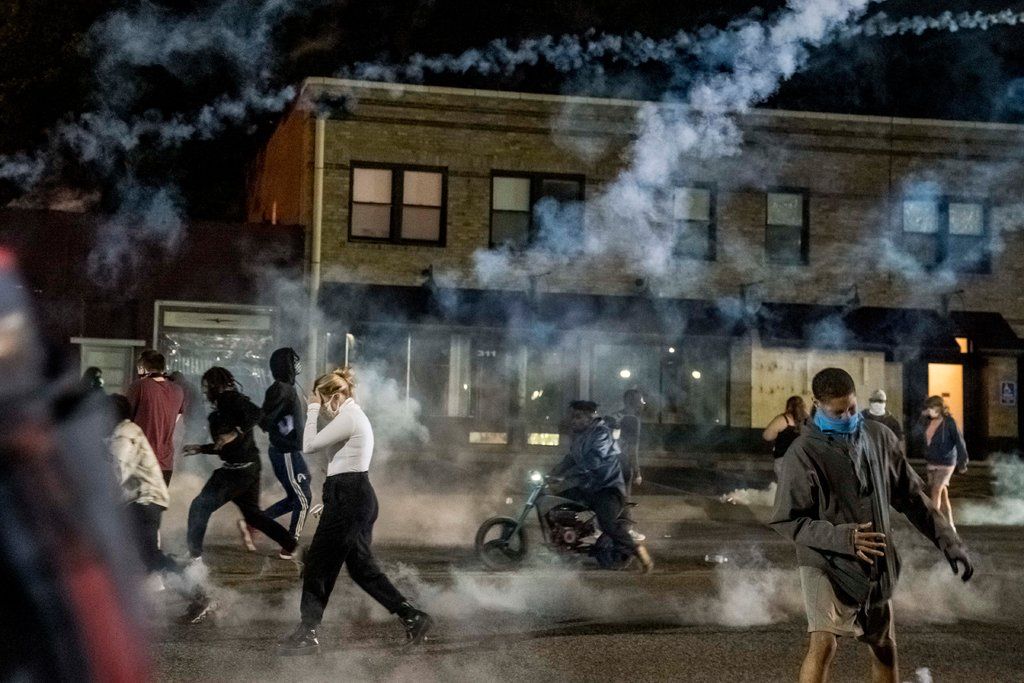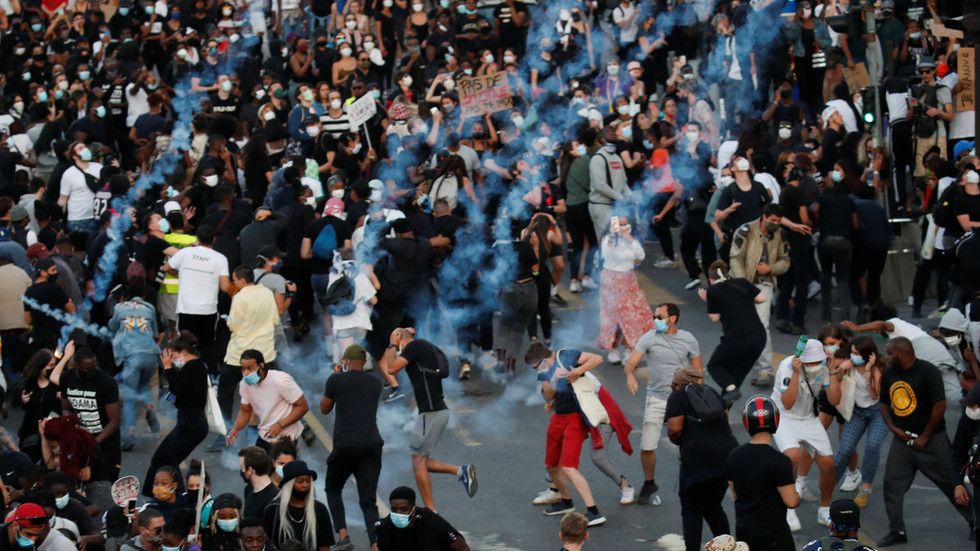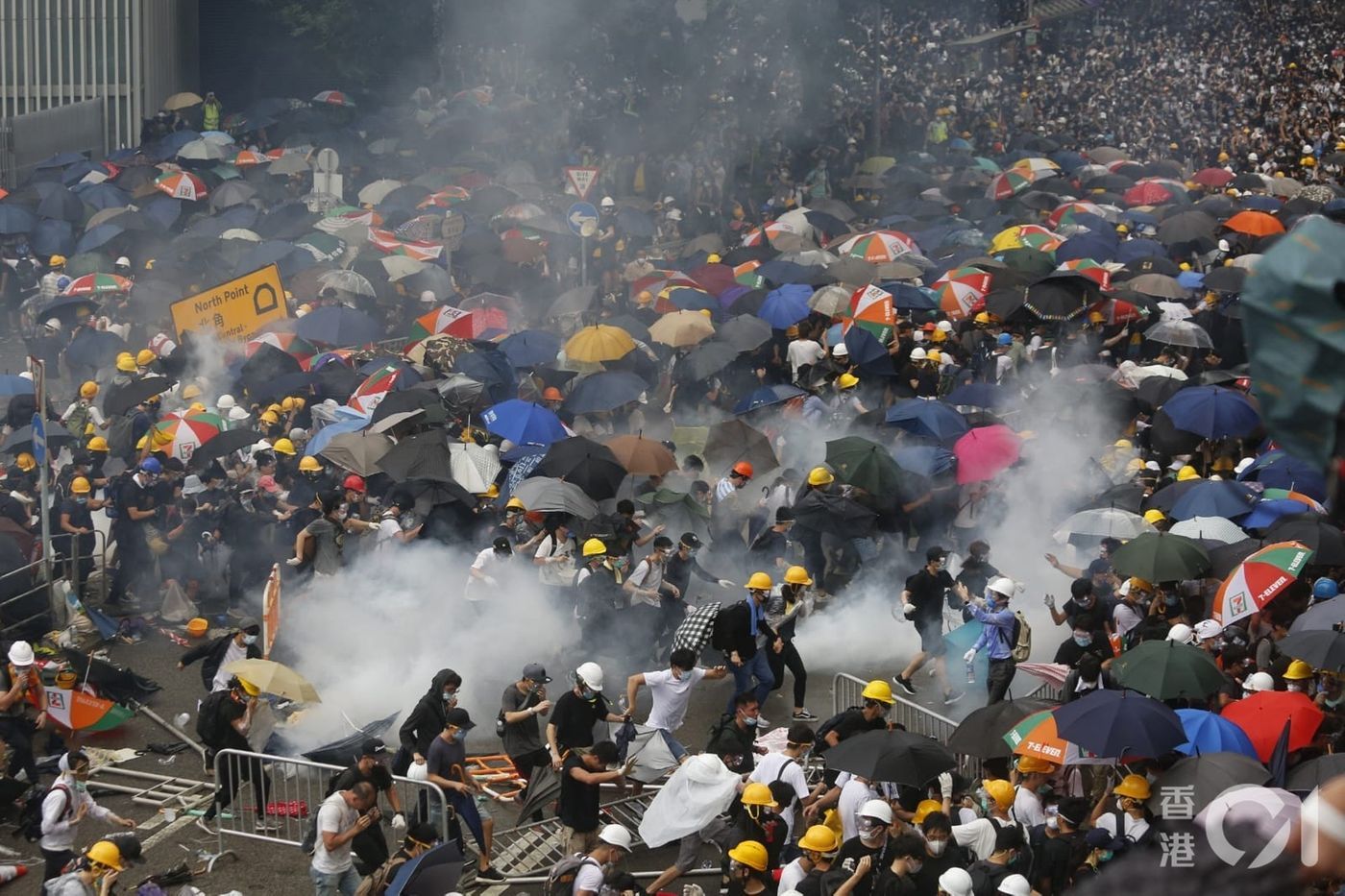
在香港,2019年6月12日的第一顆催淚彈,原本是警方為了先發制人,盡早驅散佔領夏愨道的示威者,避免佔領運動重演。這顆催淚彈卻從此激起了民憤,引發持續大半年的示威甚至騷亂,槍林彈雨。自2019年6月9日至12月9日為止,香港警方共發了16,000 枚催淚彈。
近日蔓延全美國的示威騷亂,我們再次看見防暴警察進場、催淚彈橫飛的畫面,警察控制人群的手法再惹爭議。
警方和示威者的互動一向是一門非常難以研究的課題,但至少過去半世紀的研究均指出,警方以更大程度的武力應對示威——例如從一開始便穿著防暴裝備或使用催淚彈——對緩和事態的作用很小,甚至往往適得其反。既然我們都知道這些都不管用,為甚麼催淚彈、橡膠子彈、布袋彈、防暴裝備等強硬的人群管制手法仍然在各地廣泛使用?關注美國刑事司法的非牟利團體 The Marshall Project 近日撰文 "Why So Many Police Are Handling the Protests Wrong",正正探討這個問題。

過去五十年的研究發現,使用強硬的人群管制手法往往會刺激群眾的情緒。
「這是最原始的反應。腎上腺素開始湧上心頭,整個環境的溫度正在上升,而你就會想再進一步。但是,但我們作為專業人員須要知道的是,有時候如果我們(警員)再進一步,同時也會迫使他們(示威者)往前走一步。」 - Scott Thomson, former chief of police in Camden, New Jersey
也許執法的前線警員都知道這個道理,但實際操作往往更為複雜。有一些示威活動是自上而下、有高度組織性的,但有一些就如在過去一周發生在美國的示威一樣,是在沒有大台組織下偶然發生的。再者,在同一場運動中,示威形式在不同位置也有所不同。就如在29日巴爾的摩市 (Baltimore) 的示威中,有一位警長對著群眾宣讀警暴受害者的名字,安撫了群眾的情緒;但另一邊廂,防暴警員卻在市政廳外向對警員投擲玻璃樽的示威者施放催淚彈。
早於於1967年至1970年間,美國曾成立了三個聯邦委員會研究應對暴力示威。三個委員會均得出一個結論:使用武器、催淚煙、大規模拘捕等手法控制示威人群往往會適得其反,甚至會激發這些手段正正想避免的暴力示威。
然而曾經是肯頓市警察首長的 Scott Thomson 卻指出,要做好人群管制,並不是臨場執法時依足指引,使用適當的手段,就能處理好示威這麼簡單。更為關鍵的,始終是警民之間長久以來所建立的互信。
但現實永遠是知易行難。避免使用強硬的手段、與民眾建立互信——美國很多警察部門都在80-90年代就這些方面作出嘗試。然而,從近日的示威可見,美國警方再一次回到強硬執法的時代。

為甚麼會這樣呢?
當年一個被提倡的人群管理模式叫作「談判管理」模式(negotiated management model),鼓勵警方事先與示威者會面並制定計劃,訂明時間、地點和將會舉辦的活動。
「曾幾何時,劇本是更簡單直接的。警察會與抗議的組織者會面,共同制定基本規則,這將為抗議者提供一個機會,讓他們做他們有權做的事情。」Ronal Serpas, professor of criminology at Loyola University in New Orleans, a former police chief in New Orleans and Nashville
但1999年西雅圖世貿示威,卻成為了轉捩點。示威者違背了協商條件,堵塞街道、破壞窗戶,成功阻止了世貿會議和貿易談判,警方最終以催淚煙和橡膠子彈應對。很多警員事後認為示威者並不可信,並應以更聰明的手段將可能升級的示威扼殺於萌芽。
再者,談判模式也不適用於未經事先組織的示威。而如果示威本身的主題正是警暴,與示威者談判根本不可能。
自此,美國的警察部門回歸強硬,再一次穿上具威嚇性的防暴裝備,和使用具挑釁性、會加劇緊張形勢的人群管制手段。
有沒有其他辦法?
當然,要緩和緊張形勢也有其他策略。柏林大學的研究發現其中一個關鍵因素是與示威者進行具透明度的溝通。透過使用揚聲器,以不同語言甚至親切的地方口音,在溫和的語調下告訴示威者警方執法的消息,警察與示威者能夠增加互信和化解潛在緊張的局勢。「Madison 模式」(Madison Model) 也持相似的看法,通過派遣警員與示威者傾談,了解他們為何要發起示威,聆聽他們的訴求,嘗試表現出同理心,這些都能增加警民之間的互信。
然而,也有受訪警員不同意 Madison 模式,甚至認為使用此模式應對進取的示威者只會提振他們的士氣,讓他們更肆無忌憚。同時,Madison 模式面對的另一個問題,是如何確保警員執勤時的安全。這再一次返回信任的問題:如果警員不是一開始就穿上防暴裝備,也許示威者就不會感到被威嚇,雙方也不會那麼劍拔弩張;但同時,警員也擔心如果不穿上防暴裝備,這只會讓示威者乘勢進擊。
文章最後也提到,有時候難以改變的是整個警察文化。警察文化是不能靠修改執法準則或者更換首長改變的,以新澤西肯頓市為例,整個警察部門最終被解散重組。

再看香港
1997年由臨時立法會通過、至今沿用23年的「不反對通知書」遊行集會通知制度,明顯地帶有「談判管理」模式的色彩。就如文章所述,這個模式一直以來執行上沒有太大爭議,但隨著互聯網普及,社交媒體興起,集會遊行的組織和動員已經不再如從前般依賴人與人之間的社會網絡。去中心化的網絡號召,能夠在短時間內動員,而且行動的形式、內容也沒有絕對共識,令近年的示威活動增添了不確定性。警方為了避免潛在的風險,也更易傾向採取更強硬的手法。「談判管理」模式,似乎在去中心化的年代,也不再如從前般有效維持警民信任。
2019年6月12日,香港警察發射催淚彈的決定,印證了多年來的研究結果——強硬的人群管制手法會令局勢升級。更嚴重的後果是,這本來也許只是警隊人群管制手段上的一個選擇,但在傳媒的鏡頭下成為政權暴力打壓人民的體現。大量警隊發射催淚彈的視頻在網上廣傳,令示威者深深感受到所謂「政權暴力」的切膚之痛,最終警民信任破裂:
For many people, tear gas is their first interaction with state violence. It’s the first time they’ve been treated like an insect, usually by police geared up like robocops. That warlike stance is a strong escalatory agent in a protest...But crowd control is often not the point of state violence. Its goal is usually to put people in their place, to “dominate,” as the president has called for. Viewed through that lens, it’s no wonder that tear gas is a tool of choice. Tear gas will enrage, but not deter. It will hurt and maim, but not de-escalate. - The Atlantic, I Can’t Breathe: Braving Tear Gas in a Pandemic
美國的警察部門從改革嘗試,到信任破裂,再回歸強硬,警民衝突的問題暫時看不見曙光。在香港,問題卻遠不止警民信任破裂這麼簡單。市民對警察的取態已為政治化並嵌入了「民主/反中 vs 極權/親中」的對立框架內,對警員執法的理解被視為向極權屈服,而對警暴的批評即被視為支持「抗爭有理」。也許要重建警民互信的前提,正是要先把警暴問題從以上政治敘事框架抽離,但在高度政治化和撕裂的香港社會,可能性又有多大呢?
正要擱筆之時,筆者看到報道指波特蘭市長指示警員除非面對非常嚴峻及即時生命威脅,並且無其他可行辦法,否則不得使用催淚彈驅散示威者,是繼西雅圖和丹佛市後第三個限制或使用催淚彈的城市。
閱讀原文:
- The Marshall Project, Why So Many Police Are Handling the Protests Wrong: https://www.themarshallproject.org/2020/06/01/why-so-many-police-are-handling-the-protests-wrong
- The Atlantic, I Can't Breathe: Braving Tear Gas in a Pandemic: https://www.theatlantic.com/health/archive/2020/06/i-cant-breathe-using-tear-gas-during-pandemic/612673/?fbclid=IwAR21683-9eFj9UEFHrTS9r2IDG2XBYvW7ikTkHcHP6D4uO2WZfk54Aom6TE
文/秦逸渢
【Telegram 頻道】:https://t.me/civilcritique


















